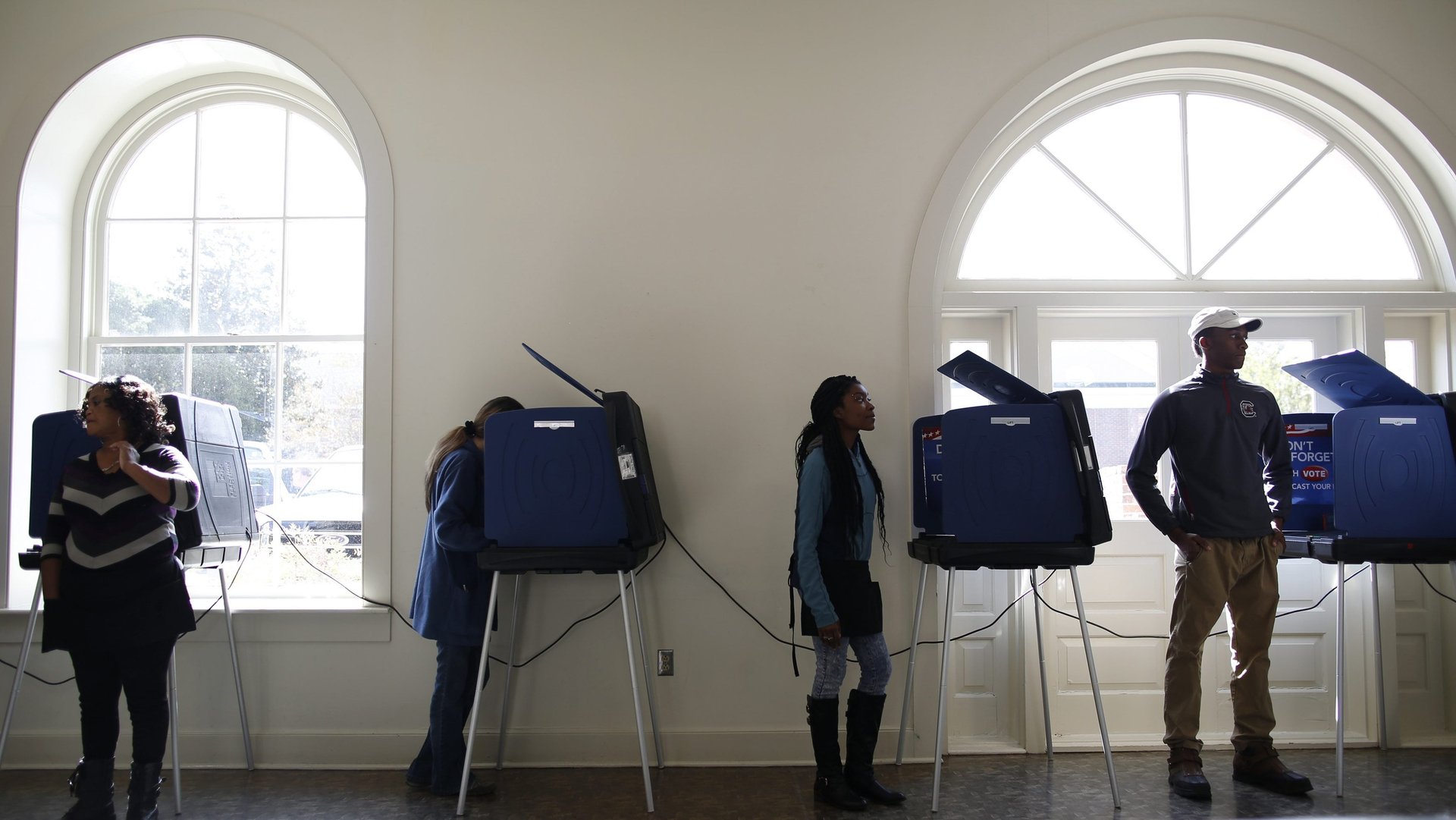Startups are co-opting Donald Trump’s digital playbook to push progressive politics in 2018
In the months before the 2000 US presidential election elevated George W. Bush to the White House, a batch of political startups emerged to rally Democratic voters (and their cash) through websites such as Vote.com.


In the months before the 2000 US presidential election elevated George W. Bush to the White House, a batch of political startups emerged to rally Democratic voters (and their cash) through websites such as Vote.com.
Virtually none of them lasted. But in the wake of Donald Trump’s election last year, a new cohort of startups is emerging, and this time they’re borrowing something from Trump’s own playbook.
New Media Ventures (NMV), a six-year-old seed fund backing progressive technology and media startups, is one of several left-leaning groups, alongside Higher Ground Labs, New Left Accelerator, and Democracy Labs, that are expanding their investments in political startups in the US that use technology to sway voters. Conservatives lack a comparable public technology effort, says Nicco Mele, director of Harvard’s Shorenstein Center on Media, Politics and Public Policy, and so have tended to invest heavily in a specific campaign’s technology—such as Trump’s use of UK-based firm Cambridge Analytica for digital targeting data.
In June, NMV announced it would commit $1 million to at least 14 startups, with plans to double the 10 investments it made in 2016. That’s small by Silicon Valley standards, but Julie Menter of NMV says the fund wants to maximize political impact by elevating new voices outside the mainstream media, conducting large-scale digital messaging and social-media monitoring campaigns, and mobilizing volunteers. To try to ensure revenues, it’s backing a range of models from non-profits to hybrid consulting-and-product companies. NMV argues its success backing Upworthy, CrowdTangle, DailyKos, and Blavity, and a 15% return for investors, is evidence it can shape the national conversation while growing backers’ money.
The firm’s next round of investments—which includes the grassroots organizing platforms Flippable, Swing Left, and Indivisible—is driven in part by adapting Trump’s playbook. Although Trump ran an unconventional campaign, it used technology and political rallies to relentlessly test what messages would resonate, and invested heavily in reaching an audience on social media, particularly Facebook.
These were not your average marketing campaigns, Gary Coby—who worked on Trump’s campaign as director of advertising at the Republican National Committee—said in Wired. Trump took advantage of the ability to experiment with digital messages on Twitter and Facebook at an unprecedented scale for political campaigns. On an average day, the Trump campaign ran 40,000 to 50,000 variations of its ads on Facebook—”A/B testing on steroids,” Coby called it—to gauge the performance of different formats, subtitles, images, video, and other variables. The result was not just more engagement. It energized an audience other politicians had missed.
“Large-scale messaging experiments found an audience of people that everyone else overlooked who came out to vote,” Menter said. Menter believes this ability to test messages, identify an audience, and then spread it across multiple channels has the potential to transform how political and advocacy campaigns are run for Democrats as well.
Applying technology to politics follows an old pattern, says Mele. Political turmoil tends to spark innovation: The 1970s led to the modern incarnations of the American Civil Liberties Union and the environmentalist Sierra Club; both have used promotional techniques borrowed from sophisticated marketing and advertising agencies. The petitions platform MoveOn.org emerged in 1998 from the effort to impeach US president Bill Clinton. Today, the interest in political startups is driven in large part by opposition to Trump. ”It’s a natural part of the political cycle.” says Mele. “Some will find the right timing, message and execution, and others will disappear.”
However, the political startup industry “is littered with failed attempts,” Mele says. Companies adapting Silicon Valley technology to politics have tended to see their hopes dashed once the bills come due. Campaigns are hard to acquire as customers, since they tend to disband after a few months. Infrequent elections mean inconsistent revenue. And most candidates in the US for state and local races have minuscule budgets.
There is also another perennial question: Does technology really make a difference in politics? Evidence that it delivers votes on election day is still surprisingly thin, according to Columbia University political science professor Donald Green. “It’s very easy to tell a historical narrative through the lens of technology, and exaggerate its impact,” he says. Academics note that the correlation between well-paid political consultants’ methods and actually winning elections is virtually non-existent.
Virtually no data suggests technology made a difference in Trump’s vote count either (although email, text messaging and other methods were undeniably effective for fundraising). A much simpler explanation, says Green, is that Trump capitalized on his constant presence on front pages and prime-time television. Green cites studies showing text messaging before election day boosts voter turnout by only 1% (still important given Trump’s razor-thin margin of victory), while other methods such as email have “a perfect record of never working.”
Research should soon be able to identify what works. Digital outreach is amenable to measurement at the scale of billions, or even trillions of data points, and academics and data firms are now crunching the numbers on how these new techniques affect election-day results, says Green. No definitive conclusions are available yet, but the existing data does suggest one thing: Mobilize the truly motivated.
While only a small fraction of voters are willing to go out and canvass for candidates, those that do have an outsized impact on the vote tallies on election day. ”Invest in getting activists into the field,” Green advised, “That works best.”